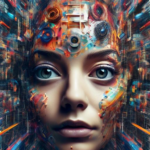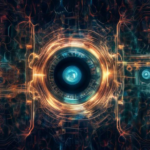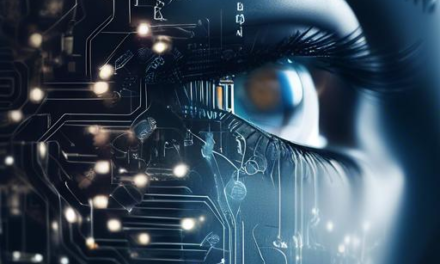In the realm of creativity where pixels paint possibilities and algorithms sculpt artistry, the advent of AI image generation stands as a beacon of technological marvel and imaginative potential. Yet, much like a double-edged sword, this innovation slices through uncharted legal territories, leaving creators, litigators, and tech enthusiasts grappling to understand its implications. Welcome to the labyrinthine world where law meets machine-generated ingenuity. This article seeks to illuminate the path, offering guidance and insights as we navigate the complex legal landscape of AI image generation. Hold tight: while the journey may be intricate, the destination promises clarity and confidence.
Table of Contents
- Understanding Copyright Implications for AI-Generated Images
- Fair Use and AI: Navigating the Gray Areas
- Licensing Strategies for AI Image Creators
- Mitigating Risks: Protecting Your AI Creations
- Ethical Considerations in AI Image Production
- Collaborating with Legal Experts: A Proactive Approach
- Staying Abreast of Evolving AI Legislation
- Practical Steps for Compliance in AI Image Generation
- Closing Remarks
Understanding Copyright Implications for AI-Generated Images
The advent of AI-generated artwork is revolutionizing the creative industries, yet it brings with it complex legal challenges. **Copyright law** traditionally protects original works of authorship, but when a machine produces an image, the authorship becomes ambiguous. This raises several questions around ownership, rights, and usage.
One of the key questions is who holds the copyright. Is it the **programmer who developed the AI**, the artist who provided initial input data, or the AI itself? Currently, most legal frameworks do not recognize AI as an entity capable of holding copyright. This often leads to the **creator of the AI or the person providing the input** being considered the rights holder. However, this could vary greatly depending on jurisdiction, and the laws are continually evolving.
- Who owns the copyright?
- How can copyright be enforced?
- What are the ethical considerations?
Another significant concern is **fair use**. Since AI algorithms are trained on pre-existing images, questions surrounding whether this constitutes fair use or infringement become pertinent. Content generated using copyrighted materials without explicit permission can lead to potential legal challenges. It’s crucial for artists and developers to understand the allowable limits of copyrighted material use in their datasets to avoid infringement.
Example Scenarios:
| Scenario | Potential Issue |
|---|---|
| Using AI to create a new art piece from public domain images | Generally safe, as public domain materials are free from copyright restrictions. |
| Training AI on recent copyrighted images without permission | Risk of infringement; permission from copyright holders is recommended. |
The ethical considerations cannot be ignored, either. How fair is it to use someone’s artistic style or copyrighted images to train an AI? These ethical dilemmas emphasize the need for clear frameworks and guidelines to protect original creators while fostering innovation.
as AI continues to develop, it’s paramount for those using AI-generated imagery to stay informed about ongoing legal changes. Balancing innovation with respect for existing copyright laws and ethical standards will be key to navigating this evolving landscape successfully.
Fair Use and AI: Navigating the Gray Areas
In today’s digital landscape, the confluence of AI and copyright laws presents a fascinating yet intricate scenario. AI-driven image generation tools, like those used in creating digital art and other visual media, often maneuver in the delicate territory of **Fair Use**. The challenges lie in deciphering how the traditional principles of Fair Use apply to works created, or even influenced, by AI.
- Transformative Use: If the AI-generated content adds new expression or meaning to the original source, it might count as transformative, thus aligning with Fair Use standards.
- Amount and Substantiality: The quantity of the original work used is crucial. Minimal usage might favorably tilt the scale towards Fair Use.
- Market Impact: Analyzing whether the AI-generated image affects the market value of the original work is essential. Significant market impact could challenge the Fair Use claim.
Copyright owners and creators are generally protective of their work, which adds a layer of complexity in the utilization of AI tools. In many cases, an artist’s intent combined with AI’s algorithm can blur the lines between original creations and derivative works. Here, **legal precedents** might offer some guidance, but they are often insufficient due to the rapid evolution of AI capabilities.
The ethical dimension cannot be overlooked. For AI developers and users, respecting the rights of original creators while leveraging AI’s potential necessitates a balanced approach. Ethical AI use involves:
- Ensuring transparency about the sources of data sets utilized by AI.
- Promoting originality by encouraging AI tools designed to minimize copyright infringement risks.
| Principle | Implication |
|---|---|
| Transformative Use | Adds new expression to original |
| Amount and Substantiality | Minimal use favors Fair Use |
| Market Impact | Significant impact may challenge Fair Use |
Licensing Strategies for AI Image Creators
In the evolving domain of AI-generated imagery, understanding and navigating licensing methods is crucial for creators and users alike. Crafting an effective strategy involves striking a balance between protecting intellectual property and fostering innovation. Here are some key approaches to consider:
- Open Source Licensing: Share your AI tools and models under open-source licenses like MIT or GPL. This encourages collaboration and wider adoption, potentially accelerating improvements and innovations.
- Creative Commons: Use Creative Commons licenses to specify how others can use your AI-generated images. This can range from allowing free use with attribution to more restrictive licenses that limit commercial use.
- Commercial Licensing: Develop a commercial licensing model for your images. Offer tiered pricing structures for different usage scenarios, such as personal vs. commercial use, or one-time vs. recurring fees.
An essential aspect to consider is creating clear and concise terms of use. This transparency not only builds trust with users but also mitigates potential legal disputes. Below is an example of how to structure your licensing terms:
| License Type | Permission | Restriction |
|---|---|---|
| Open Source | Modify and distribute | Must share alike |
| Creative Commons | Use with attribution | No commercial use |
| Commercial | Full usage rights | Payment required |
Furthermore, modern AI creators might consider implementing blockchain technology to manage and track usage rights. Blockchain can provide an immutable record of image creation and licensing agreements, improving transparency and reducing the risk of unauthorized use.
Ultimately, the choice of licensing strategy will depend on your goals, whether they are to maximize exposure, generate revenue, or simply protect your work. Being thoughtful and informed about these strategies ensures not only legal compliance but also aligns your creative objectives with practical implementation.
Mitigating Risks: Protecting Your AI Creations
When venturing into the dynamic field of AI image generation, safeguarding your intellectual property (IP) is paramount. **Intellectual Property Rights (IPR)** can become a tricky terrain, balancing between innovation and protection. Creators must recognize and mitigate risks to secure their AI creations.
- Copyright Protection: Aside from traditional copyright laws, regulatory bodies are now addressing AI-created works. It is essential to understand whether your generated images can be patented or are eligible for copyright under current laws.
- Data Privacy: Ensure that any data used for training your AI complies with privacy laws. This includes GDPR in Europe and CCPA in California, among others. Mismanagement of data can lead to hefty fines and legal troubles.
- Third-Party Content: Avoid using copyrighted materials to train your algorithms without proper licenses. This protects against potential lawsuits from original content creators.
Engaging in proper **licensing agreements** can provide another layer of protection. Licensing clearly delineates how your AI-generated images can be used, protecting you from unauthorized exploitation of your works. Consider the following approaches:
| Approach | Benefit |
|---|---|
| Non-Exclusive License | Allows you to grant rights to multiple users, maximizing revenue potential. |
| Exclusive License | Gives a single user exclusive rights, often for a higher fee. |
| Royalty-Free License | Simplifies transactions by offering a one-time payment for unlimited use. |
Also, consider leveraging **technical measures** to protect your creations. Digital Watermarking and Blockchain technology can be used to track and authenticate your AI-generated content, thereby guarding against unauthorized usage and ensuring proper attribution.
continuously monitor the **legal landscape** as it evolves. Staying abreast of changes in laws and regulations can help you adapt quickly and maintain compliance. Engage with legal professionals who specialize in IP and technology law to navigate this complex territory effectively.
Ethical Considerations in AI Image Production
The emergence of AI-driven image generation presents a wealth of opportunities, but it also brings to the fore several pivotal ethical considerations. Balancing innovation with moral responsibility is essential to ensure that these technologies are harnessed for the greater good without infringing on individual rights or contributing to societal harm.
- Intellectual Property Rights: One of the primary concerns revolves around the ownership of AI-generated images. Traditional copyright laws are not always equipped to handle creations produced by non-human entities. It’s critical to discuss and define who owns the rights—whether it’s the developer of the AI, the user who inputs the prompts, or the AI itself.
- Bias and Representation: AI systems often learn from existing datasets, which can inadvertently perpetuate existing biases. Ensuring diverse and representative datasets is crucial to avoid reinforcing stereotypes and to produce ethical, inclusive images that do not marginalize any group.
- Privacy Concerns: The ability of AI to generate realistic images raises significant privacy issues, particularly when creating images of real people without their consent. Establishing clear guidelines and regulations to protect individual privacy is fundamental.
Ethics in AI image production also involves the question of consent and awareness. Users depicted in AI-generated images should ideally have a say in their creation and distribution. Invasive use of such technology without explicit consent undermines personal autonomy and can lead to unauthorized exploitation.
| Ethical Consideration | Description |
|---|---|
| Ownership | Determining legal rights over AI-generated content. |
| Bias | Ensuring fair representation by using unbiased data. |
| Privacy | Safeguarding identities and requiring explicit consent. |
Transparency in the methodology and purpose of AI image generation is equally important. Users and stakeholders should be fully informed about how these images are created, the data sources used, and the potential implications of their use. Transparency fosters trust and facilitates ethical scrutiny by the broader community.
fostering a culture of ethical AI requires sustained dialogue among developers, policymakers, and society. It demands proactive measures such as ethical audits, policy-making that anticipates future challenges, and continuous education for stakeholders to stay abreast of evolving ethical norms and technical capabilities.
Collaborating with Legal Experts: A Proactive Approach
Collaborating with legal experts early in the process can be a game-changer for anyone venturing into the AI image generation landscape. These professionals bring a wealth of knowledge that can help navigate potential minefields and ensure compliance with evolving laws and regulations. Here’s why you should consider looping in legal minds from the onset:
- Intellectual Property Rights: Visual creations generated by AI can fall into a gray area when it comes to copyright and trademark laws. Legal experts can help define ownership and usage rights, ensuring that your creations are protected and that you are not infringing upon others.
- Data Privacy: AI systems often rely on vast datasets that may include personal information. Legal counsel can guide you through data protection regulations like GDPR or CCPA, ensuring that you handle user data responsibly.
- Compliance with AI Regulations: As AI continues to evolve, so does its regulation. A legal team can keep you updated with the latest rules governing AI use, helping you maintain compliance and avoid hefty fines.
To provide more clarity, here’s a quick overview of how legal experts can assist at various stages of your AI image generation projects:
| Stage | Legal Considerations |
|---|---|
| Initial Design | Contract & IP policies |
| Data Handling | Privacy & consent forms |
| Deployment | Compliance reviews |
| Post-Launch | Ongoing legal audits |
Incorporating legal expertise into your workflow may also foster innovation. When developers and creatives understand the legal boundaries, they can confidently push the envelope without the fear of crossing any lines. This proactive approach not only safeguards your projects but empowers your team to engage in groundbreaking work within the framework of legality.
Staying Abreast of Evolving AI Legislation
In a rapidly advancing field like AI image generation, staying informed about evolving legislation can feel like aiming at a moving target. Like it or not, compliance is a key piece of the puzzle for any entity leveraging AI technologies. To help you stay ahead, here are some crucial aspects to consider:
- Data Privacy: As AI tools increasingly depend on vast datasets, understanding the nuances of data privacy regulations such as GDPR and CCPA has never been more critical. These laws dictate how data should be collected, stored, and managed, placing a high premium on transparency and user consent.
- Intellectual Property (IP): Who owns the artwork generated by AI? This gray area is subject to evolving rules and judicial interpretations. Keep in mind that regulations around copyright and IP rights vary significantly across jurisdictions.
- Ethical Considerations: There is also a growing focus on ethical AI usage, urging companies to adopt practices that minimize biases and promote equitable outcomes. Being ethically compliant is not just about following laws; it’s about aligning with societal values.
To give you a snapshot of existing regulations and their scope, here’s a comparative table:
| Regulation | Geographic Scope | Key Focus |
|---|---|---|
| GDPR | European Union | Data Privacy |
| CCPA | California, USA | Consumer Data Protection |
| IP Laws | Global, varies | Intellectual Property Rights |
Beyond established regulations, it’s vital to keep an eye on legislative trends and emerging frameworks. For example, discussions around AI-specific legislations are gaining momentum. The European Union’s upcoming AI Act aims to create a unified framework for AI development and deployment across member states. Similarly, U.S. lawmakers are considering various proposals to regulate AI transparency and accountability.
While the landscape may appear daunting, integrating regulatory compliance into your AI strategy can offer a competitive edge. By aligning your practices with legal expectations, you don’t merely mitigate risks—you build trust and credibility. Use reliable sources such as official updates, legal advisories, and industry forums to stay current, and consider leveraging professional legal counsel to navigate the complexities.
Practical Steps for Compliance in AI Image Generation
A successful approach to compliance in AI image generation involves a blend of best practices and awareness of legal obligations. Here are some actionable steps to help navigate this intricate terrain:
- Understand Intellectual Property (IP) Rights: Familiarize yourself with the various forms of IP that your AI-generated images might interact with. This includes copyright, trademarks, and patents, ensuring you do not infringe on existing rights.
- Implement Consent Mechanisms: Always seek permission before using images of identifiable individuals. This can be done through model releases or terms of service agreements.
- Use Fair Use Judiciously: Make sure your usage of existing images falls under fair use by considering the purpose, nature, amount, and effect of the use on the original work’s value.
When dealing with data, adhere to privacy laws such as GDPR and CCPA. These regulations mandate transparent data collection practices and grant users the right to opt-out of data usage, particularly in biometric data collection.
Moreover, you should curate a reliable dataset for training your AI models:
| Dataset Aspect | Best Practice |
|---|---|
| Quality | Select high-resolution and diverse images. |
| Permission | Ensure all images are royalty-free or licensed. |
| Privacy | Avoid images with identifiable individuals without consent. |
Organizations should also consider developing an AI Ethics Policy. This policy outlines the ethical use of AI technologies, responsible data usage, and risk mitigation strategies. Not only does this create a robust framework for compliance, but it also enhances trust with users and stakeholders.
Lastly, partnering with legal experts can help ensure all bases are covered. Regular audits of your processes and continuous updates on legal changes give your AI projects a fortified layer of compliance, safeguarding both innovation and legality.
Closing Remarks
As we continue to navigate the ever-evolving legal landscape of AI image generation, it is essential to stay informed and seek out expert guidance when needed. By understanding the complexities and nuances of copyright, intellectual property, and ethical considerations surrounding artificial intelligence, we can ensure that innovation and creativity flourish in a responsible and sustainable manner. Remember, knowledge is power, and with the right tools and resources, we can confidently navigate the legal challenges and opportunities that arise in this exciting field. Here’s to embracing the future of AI image generation with confidence and vision. Onward and upward!
































